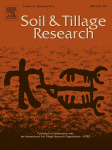Ver ítem
- xmlui.general.dspace_homeCentros Regionales y EEAsCentro Regional Buenos Aires NorteEEA Delta del ParanáArtículos científicosxmlui.ArtifactBrowser.ItemViewer.trail
- Inicio
- Centros Regionales y EEAs
- Centro Regional Buenos Aires Norte
- EEA Delta del Paraná
- Artículos científicos
- Ver ítem
Crop diversification effects on soil organic carbon and nitrogen storage and stabilization is mediated by soil management practices in semiarid woody crops
Resumen
Crop diversification is a promising strategy to mitigate climate change through soil carbon sequestration while ensuring soil fertility maintenance and food security. Here, we assess the impact of different inter-cropping practices on soil organic carbon (SOC) and nitrogen (N) storage and stabilization under rainfed and irrigated semiarid conditions. Under rainfed conditions, an almond (Prunus dulcis Mill.) monocrop was compared with an almond
[ver mas...]
Crop diversification is a promising strategy to mitigate climate change through soil carbon sequestration while ensuring soil fertility maintenance and food security. Here, we assess the impact of different inter-cropping practices on soil organic carbon (SOC) and nitrogen (N) storage and stabilization under rainfed and irrigated semiarid conditions. Under rainfed conditions, an almond (Prunus dulcis Mill.) monocrop was compared with an almond inter-cropped with caper (Capparis spinosa) or with winter thyme (Thymus hyemalis). Under irrigated conditions, a mandarin (Citrus reticulata Blanco) monocrop was compared with a mandarin inter-cropped with an annual crop rotation (including Hordeum vulgare, Vicia sativa and Vicia faba) or with a triennial crop rotation (including Vicia faba, Portulaca oleracea and Vigna unguiculata L.). The SOC and N stocks, SOC mineralization rates, water-stable aggregates and associated OC and N contents were estimated at 0–10 and 10–30 cm depth in each monocrop and inter-cropping system after three years. Contrasting effects of inter-cropping on SOC and N stabilization were found in the rainfed and irrigated systems. The combination of inter-cropping and no tillage did not affect the SOC stocks or mineralization rates at any soil depth in the rainfed system, while it significantly increased the OC and N contents within the large macro-aggregates in the subsoil. Compared to the irrigated mandarin monocrop, the mandarins inter-cropped with the annual crop rotation showed a significant increase of 10% and 18% in the topsoil and subsoil N stocks, respectively, while the SOC mineralization rates were reduced by 30% at both soil depths. On the contrary, the topsoil SOC stock in the mandarins inter-cropped with the triennial crop rotation were reduced by 38% compared to the monocrop. Significant reductions ranging between 24% and 66% were also observed in the OC and N contents associated to the macro- and micro-aggregates in the topsoil and subsoil of both crop diversifications compared to the monocrop system. Our results highlight the potential of inter-cropping rainfed woody crops with perennials for boosting SOC and N storage and stabilization. In irrigated woody monocrops, inter-cropping with annual crop rotation schemes that include two or more leguminous and reducing tillage frequency operations seems to be more appropriate in terms of SOC and N stabilization.
[Cerrar]

Autor
Almagro, María;
Re, Paula;
Díaz-Pereira, Elvira;
Boix-Fayos, Carolina;
Sánchez-Navarro, Virginia;
Zornoza, Raúl;
Martínez-Mena, María;
Fuente
Soil and Tillage Research 233 : 105815. (September 2023)
Fecha
2023-09
Editorial
Elsevier
ISSN
0167-1987
1879-3444
1879-3444
Formato
pdf
Tipo de documento
artículo
Palabras Claves
Derechos de acceso
Restringido
 Excepto donde se diga explicitamente, este item se publica bajo la siguiente descripción: Creative Commons Attribution-NonCommercial-ShareAlike 2.5 Unported (CC BY-NC-SA 2.5)
Excepto donde se diga explicitamente, este item se publica bajo la siguiente descripción: Creative Commons Attribution-NonCommercial-ShareAlike 2.5 Unported (CC BY-NC-SA 2.5)


